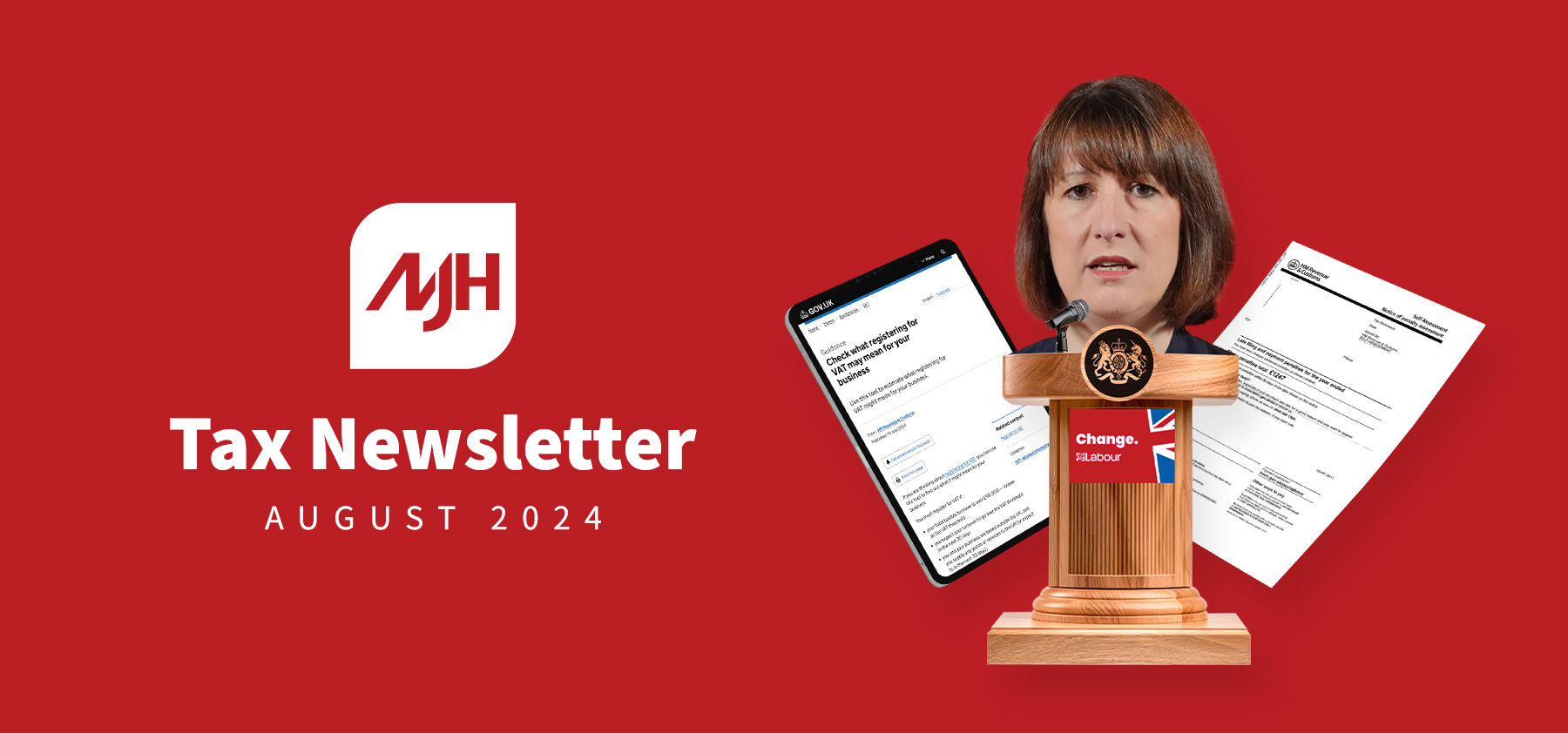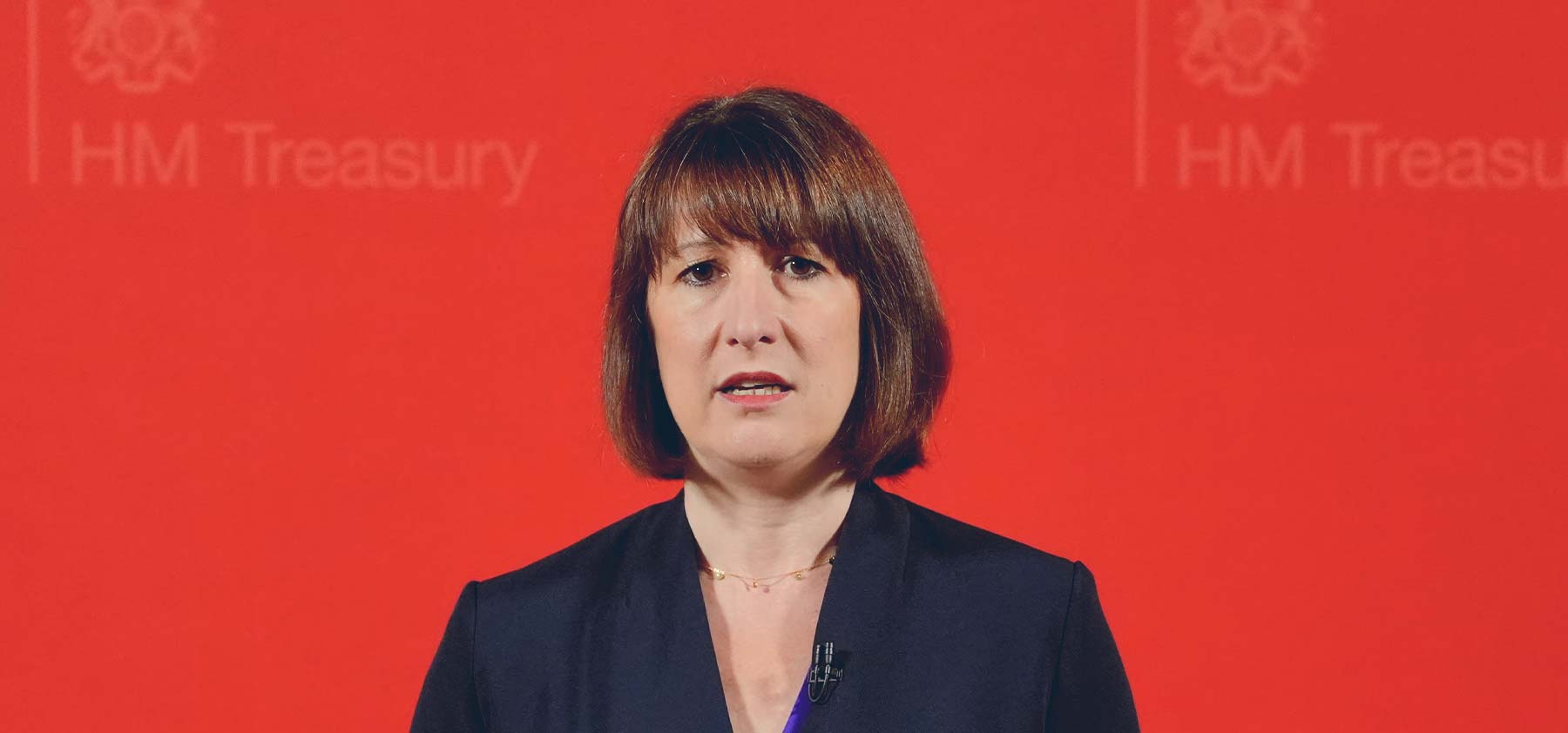
What does the new Government mean for tax?

The time for debate and conjecture is now over. The General Election was settled on 4 July and we now know we have a new Labour Government, giving us a more solid picture of what tax is likely to look like in the near future.
The new Chancellor Rachel Reeves wasted little time in getting started, announcing a Spending Audit in Parliament on 29 July.
In that speech, she reiterated the message that Labour delivered throughout the election that it will not be making major changes on the main forms of taxation.
Ms Reeves said: “I can repeat – from the despatch box – our manifesto commitment that we will not increase National Insurance, the basic, higher, or additional rates of Income Tax, or VAT for the duration of this parliament.”
She also announced further details on the manifesto commitments to “close tax loopholes and clamp down on tax avoidance, to ensure we bring that money in as quickly as possible.”
Labour has also stated it will cap Corporation Tax at the current level of 25 per cent for the entire parliament.
But what about other areas, such as Capital Gains Tax, Pensions and Inheritance Tax? As soon as the Spending Audit was revealed, commentators immediately returned to speculate whether these elements could be tinkered with to bring in tax receipts.
We won’t know for sure until the new Government’s first Budget, which has now been revealed to be coming on 30 October.
In the case of CGT, it’s not been totally clear so far what the new Chancellor will do. Ms Reeves has been quoted in the last 12 months saying there were no plans to raise CGT, but there was virtually no mention of it in the official manifesto, suggesting it could be one option. Given the so-called £22bn blackhole that Ms Reeves claimed the new Government had uncovered, and her stinging criticism of the state of the public finances she has inherited, it is widely believed that some form of tax rises are inevitable to plug the gap.
What else might we see? In other aspects of taxation, Labour has pledged a crackdown on tax avoidance and modernising HMRC.
The manifesto stated: “We will increase registration and reporting requirements, strengthen HMRC’s powers, invest in new technology and build capacity within HMRC. This, combined with a renewed focus on tax avoidance by large businesses and the wealthy, will begin to close the tax gap and ensure everyone pays their fair share.”
Labour has also pledged to publicise a roadmap for business taxation for the next parliament and to “retain a permanent full expensing system for capital investment and the annual investment allowance for small business”. The party also promised to give firms ‘greater clarity’ on what qualifies for allowances.
In the King’s Speech, the Government introduced a bill regarding what it called a “fiscal lock” – to ensure the Office for Budget Responsibility, the fiscal watchdog, assesses all tax and spending announcements. This was brought in in response to the so-called ‘mini-Budget’ of the Liz Truss premiership, which led to turmoil in the markets.
King Charles announced in Parliament: “Stability will be the cornerstone of my Government’s economic policy and every decision will be consistent with its fiscal rules. It will legislate to ensure that all significant tax and spending changes are subject to an independent assessment by the Office for Budget Responsibility. Bills will be brought forward to strengthen audit and corporate governance, alongside pension investment.”
The King’s Speech also included, among other things, one of the headline policies talked about during the General Election – the removal of VAT exemption for private school fees. And it was confirmed at the end of July when that will kick in. The 20% VAT charge on private school fees will begin in January 2025.
Need help understanding the implications of any of the new measures being considered or announced by the new Government? Get in touch.
Could a pension-related IHT proposal help raise money for new Government?

Will one of the tax-raising measures many expect to see at the next Budget surround pensions and IHT?
It may do, if the Government follows the recommendations of The Institute for Fiscal Studies. One of the IFS’ latest suggestions revolves around Inheritance Tax. We often see the issue of IHT popping up at election time – usually with suggestions the Conservatives might scrap it.
In this case, the IFS has floated the idea that the Government should close what it calls IHT ‘loopholes’ connected to pensions and AIM shares. The chancellor has been urged to consider changes that would mean money in defined contribution funds would no longer be exempt.
For savers who pass away before the age of 75, defined contribution pensions can be passed on tax-free (up to a limit of just over £1m). After that age, pension pot withdrawals are taxed under the normal Income Tax rules.
David Sturrock, an economist at the IFS, was reported to have told the Daily Telegraph: “In the coming decade or so, we estimate that the revenues raised by bringing pension pots into the scope of IHT would be in the range of £1bn to £2bn.
Do you need any assistance with retirement planning or understanding IHT liabilities? Get in touch for expert advice from our team.
95,000 get £100 fines for late filing – despite no tax being owed

We regularly remind our self-employed clients of their obligations for filing to HMRC and the deadlines for sending in their Self-Assessment Tax Return, not least because of the significant penalties they can incur for failing to do so.
And there was a story in the media this month that highlighted the fact that people can still get hit with a fine, even if they don’t owe HMRC any tax.
Anyone earning under £12,570 – the Personal Allowance – doesn’t need to pay tax. But 95,000 people who fall into that tax bracket were fined in the 2021 to 2022 tax year because they still filed their Self-Assessment Return forms late.
That was a £100 fine for each of those affected – and therefore £9.5m in penalties raised by the Treasury. These figures came via a Freedom of Information request, later reported by national newspapers.
The rules weren’t always as they are now. Previously, if we go back to pre-2011, anyone submitting late, who paid their tax on time, wouldn’t get a fine.
There are ways and means to appeal if you do get a penalty from HMRC, such as one of these. You would need to have what the tax man calls a ‘a reasonable excuse’. For example, that may be the death of your partner or family member near to the deadline or you had an unexpected stay in hospital or serious illness.
Of course, it’s better to avoid the penalties in the first place. So, we always encourage clients to prepare well in advance of this important yearly deadline to avoid any problems at the last minute that may risk failing to meet the deadline.
If you need further help or information about filing to HMRC, please contact one of our team, who will be happy to support you.
New tool may help businesses better understand VAT registration implications

Do you own or work for a business that needs to register for VAT?
If so, you might find it of interest to learn that there’s a new digital tool available to use online.
Launched by HMRC, the VAT Registration Estimator can help a business “to see what registering for VAT could mean”, officials said. It was designed, following suggestions by small businesses, to help show a company when its turnover could require businesses to register for VAT and its effect on profits.
A business must register for VAT if its total VAT taxable turnover for the previous 12 months is more than £90,000. In that case, the organisation must charge VAT on ‘eligible sales’ and can usually reclaim it on eligible purchases.
According to HMRC, about 300,000 new VAT registrations happen each year. The estimator may be useful for businesses operating below the threshold and considering voluntary registration.
Karen Thomson, Administrative Burdens Advisory Board (ABAB) member, said: “I volunteered to be a tester for the new VAT tool. I am not a VAT expert so approached the experience as if I were a business with no knowledge of VAT.
“Having made some comments, along with other stakeholders, I have now used the final tool and find it very useful. I like that when you are asked for information there are examples, links to guidance where appropriate and help on completing the boxes.”
August Questions and Answers

Q: What is the Patent Box regime and what are the benefits for businesses in the 2024/25 tax year?
A: The Patent Box regime allows UK companies to pay a reduced corporation tax rate on profits earned from patented inventions. In the 2024/25 tax year, the effective tax rate is 10%. According to HMRC, the regime is designed to ” encourage companies to keep and commercialise intellectual property in the UK”.
If your company earns £100,000 in profits from patented products, the tax liability would be £10,000 under the Patent Box, compared to £19,000 at the standard 19% rate.
To qualify, the company must own or exclusively license the patents and actively develop them. Plus, they must make a profit from them. Furthermore, the company must have undertaken qualifying development on the patents.
Incidentally, to give an idea of how widely this scheme is used, the most recent figures, published by the Government last year, showed in the tax year 2021 to 2022, an estimated 1,510 companies elected into Patent Box.
If you’d like to delve into the details of the regime and how your business can benefit, please contact our team.
Q: Dividends: I am set to earn £39,570 for my basic salary in the current tax year. On top of that, I’m due to receive for the first time some dividend payments from shares I own in a company – around £5,000. What are the tax implications for me this year?
A: The first thing to mention here is that you have a Dividend Allowance each year. Unfortunately for you and other dividend beneficiaries that has decreased for the 2024/25 tax year. It was £1,000 but it is now just £500. What it means is that you won’t have to pay tax on the first £500 of the £5,000 you’re set to earn from dividends.
For the remainder of that sum – the £4,500 of dividends – the amount of tax you pay comes down to the Income Tax Band that you fall in. Helpfully, you’ve mentioned your basic salary. So, we can see you’re in the basic rate (20%) Income Tax Band category. For the dividends, that means you must pay a rate of 8.75% on your £4,500 sum. Hence, you will pay £393.75 in tax on your dividends.
For anyone else reading this with dividends, it’s worth noting that you would need to pay 33.75% on your dividends if your income puts you in the Higher Rate Income Tax Band or 39.35% if you’re in the Additional Rate category.
If you only earn up to £500 in Dividends (this tax year’s allowance), and you don’t already file a Self-Assessment Tax Return there’s no requirement to inform HMRC or take any other action.
Those who earn between £500 or £10,000 from dividends and who don’t already normally fill out a Self-Assessment Tax Return need to tell HMRC about it. You can call their helpline, and there are two options for payment of tax. Firstly, via filling out a Self-Assessment Tax Return. Or, by having HMRC adjust your tax code to automatically take it from your salary or pension. For Dividends over £10,000 you must complete a tax return.
For more help on understanding Dividends, please contact our team.
Q: My company has missed the deadline to pay our employers’ PAYE bill. We owe £23,000 but the debt is only for the last year. What can we do?
A: In cases like this, there is something called a Time to Pay arrangement, which HMRC may allow you to make use of. This gives businesses extra time to settle their bill by paying back in monthly instalments that are more affordable. The rules governing this have been made less stringent in recent times, widening the eligibility. Looking at the list of criteria, it would seem your business should qualify for this particular support – and you can set it up online. But that is predicated on checking the points below.
The Time to Pay arrangement is open for companies that pay via PAYE if they have missed the deadline to pay an employers’ PAYE bill, as in your case. You must owe £50,000 or less and have debts that are 5 years old or less – both of which in your case, is correct).
However, you also must be registered for digital services and not have any other payment plans or debts with HMRC. Lastly, to qualify, you must have sent any outstanding employers’ PAYE submissions and Construction Industry Scheme returns that are still due.
August Key Dates

6th
– Final deadline for businesses for filing P11Ds for employees
19th
– For employers operating PAYE, this is the deadline to send an Employer Payment Summary (EPS) to claim any reduction on what you’ll owe HMRC
22nd
– Deadline for employers operating PAYE to pay HMRC. This is also the quarterly deadline for businesses that pay per quarter. For those paying by post, the deadline is 31 August
31st
– Corporation Tax Returns are due for companies with year-end of 31 August
 Book a No-obligation Discovery Call
Book a No-obligation Discovery Call




 Book a Free Discovery Call
Book a Free Discovery Call

